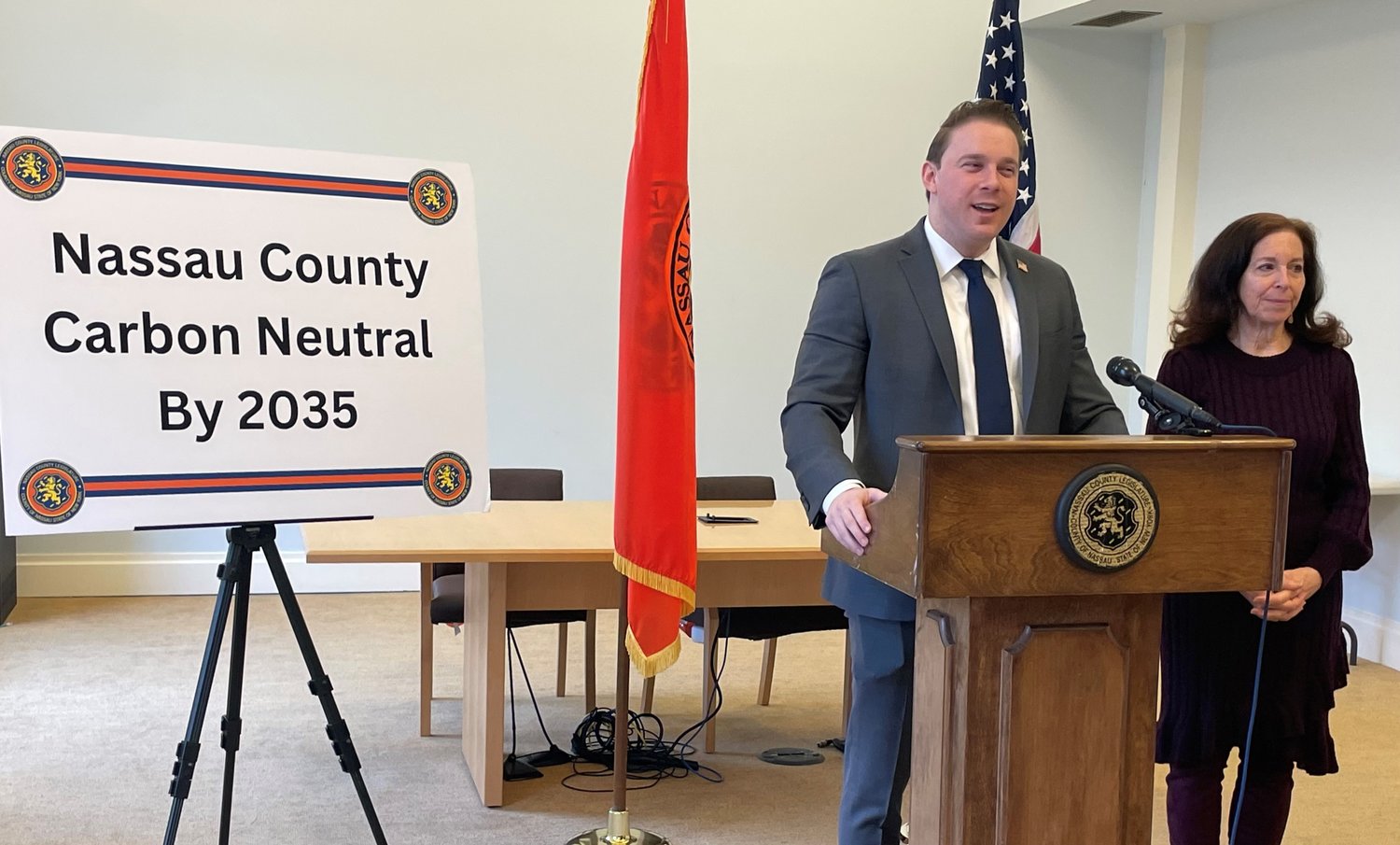Proposed bill by Legislator Josh Lafazan would make Nassau County carbon-neutral
Nassau County Legislator Josh Lafazan announced the introduction of a bill that would require the county to become carbon-neutral by 2035 to address ecological and infrastructure challenges before they become insurmountable.
The bill, which was announced at a news conference on March 28, acknowledges the unique challenges facing Nassau County and Long Island, and looks to find a solution in the next 12 years.
“I’d like to begin this morning’s press conference with a reminder that we all too often forget,” Lafazan said. “Here in Nassau County we literally live on an island, and while living on an island, our exposure to climate change is a constant threat to our homes, our communities, our infrastructure, our drinking water and our collective safety.”
Lafazan asserted that Long Island faces numerous climate-related issues due to its geographic location and changing climate conditions. The legislator referenced a recent report by Moody’s Analytics Climate Risk Scenarios, which ranked Long Island fourth among major population centers in the country for “its exposure to the physical and economic risks associated with climate change.”
Climate-related threats present a wide range of dangers to Nassau County, one of the most pressing being rising water temperatures and levels. The Long Island Sound saw its highest average temperature ever in 2021, according to an environmental study by Connecticut’s Council on Environmental Quality, which poses huge risks for wildlife and increases the chances of algal blooms in the Sound.
An increase in the frequency of superstorms and dangerous weather events such as Hurricane Sandy is another major threat. As the earth continues to warm, major hurricanes and tropical storms will continue to batter Long Island, putting communities at risk.
Another threat comes from Long Island’s reliance on a sole-source aquifer, which is the only source of freshwater for the nearly 3 million residents on the island. The aquifer is already strained from widespread use, and rising water levels and other effects from climate change could see increases in saltwater pollution in the aquifer in the coming years.
“This is all to say that there is no more time to debate something that is scientifically factual, and the actions that we take now will protect Long Island for generation after generation to come,” Lafazan said.
“This is not hyperbole. Powerful, once-in-a-generation storms that happened once a century are now happening once a month.”
Lafazan’s proposal requires the county to create and deliver a carbon neutrality action plan to the legislature no later than Dec. 1, 2024, as well as provide progress updates starting from Dec. 24, 2024.
The proposal would also empower the county executive to seek state and federal grants to support the project, as well as create a carbon neutral advisory panel made up of local experts.
While New York state has already made a pledge to become carbon neutral by 2050, Lafazan’s plan would speed up the process for Nassau County.
The plan will not require Nassau County residents to adhere to any new mandates, but will put the onus for the change on local municipal governments.
Lafazan was joined during the press conference by Adrienne Esposito, the executive director of the Citizens Campaign for the Environment, a local nonprofit that works to promote climate awareness through education, research, lobbying and public outreach.
Esposito reiterated the dangers of not being focused on addressing the risks of climate change, and commended the proposed bill for its focus on protecting the environment and Long Island residents.
“We need to take bold actions to reduce carbon emissions to just try to stem the tide of climate change impacts,” Esposito said. “What we do matters. Local government’s actions matter.”
Lafazan and Esposito also discussed what Nassau County was currently doing to improve its infrastructure and address climate issues. Nassau County has been working on improving its coastal resiliency as well as increasing drainage infrastructure.
However, Lafazan claimed, “The irony here is that we wouldn’t need to do any of that if we just reduced our carbon emissions.”







